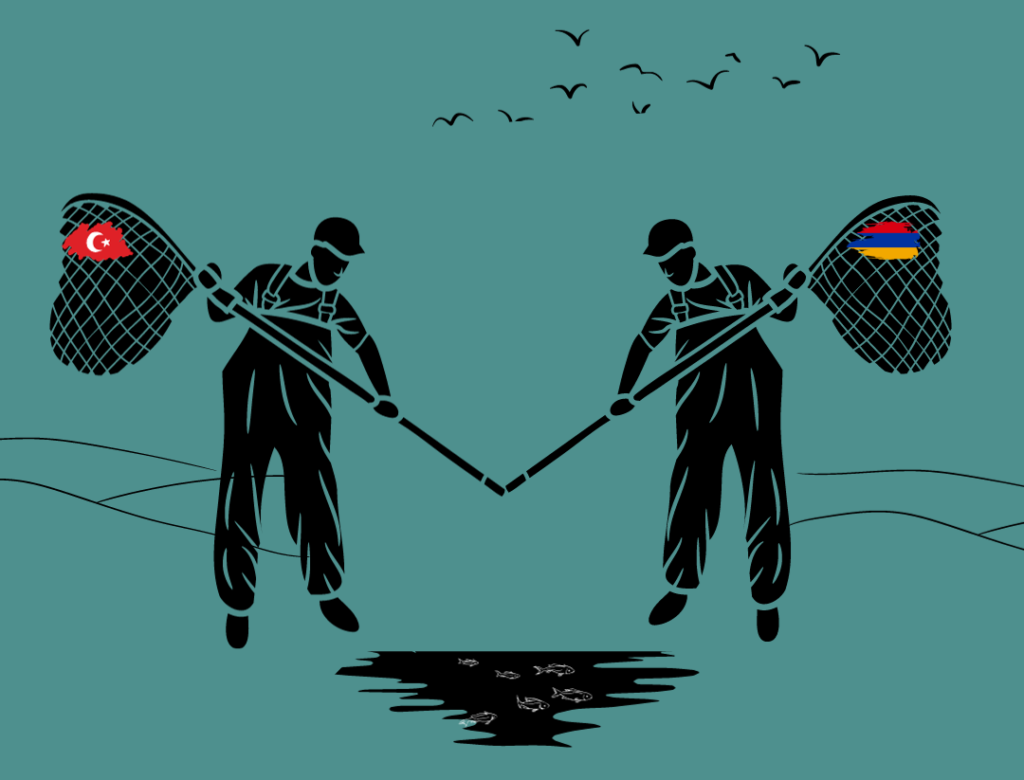
Although Armenia and Turkey re-engaged in a process of normalising their relations at the end of 2021, this is taking place almost exclusively at a formal level, via the two special representatives (Ruben Rubinyan and Serkar Kiliç). The participation of civil society, an essential link in this type of process, is almost completely lacking, unlike previous attempts. The Imagine Centre for Conflict Transformation has addressed this gap by publishing a small study entitled “Why re-engage in the Armenia-Turkey normalization process? How to re-engage meaningfully? Conducted by a team of young researchers and/or activists – Burcu Becermen, Lilit Gizhlaryan, Pınar Sayan and Diana Yayloyan – and written by them as well as Phil Gamaghelyan, from the University of San Diego, it is the fruit of field surveys in Armenia and Turkey from October 2022 to May 2023.
More than 55 individual interviews in both countries. In major cities (Yerevan, Ankara, Istanbul), the team met with policymakers, former diplomats, civil society actors and analysts previously involved in dialogue/normalisation efforts between Armenia and Turkey. In the border regions of Armavir and Shirak in Armenia, as well as in the cities of Kars and Iğdır in Turkey, the team met with local community representatives.
Mutual mistrust is blatant, symptomatic of “Armenian fears and Turkish indifference”. It hinders communication at both official and unofficial levels. The informational and analytical gap between the two societies is yawning, and nothing is being done at the political level to bridge the gap. On the Armenian side, coverage of Turkey in the press, in the speeches of so-called “experts”, and even in some academic circles, is all too often a series of clichés or shows a lack of critical thinking and of the most elementary methodology required for analysis. On the Turkish side, Armenia is virtually absent from media coverage and analysis. Azerbaijani media sources are a major filter for news about Armenia. More generally, restrictions on press freedom and civil society in Turkey make balanced and contextualised coverage rare.
However, the economic interests and concerns of the border communities suggest both similarities and points of motivation and interest that could be brought together, particularly in the case of the more disadvantaged and/or isolated communities, who are naturally more keen to see the border reopened. In the Shirak region, while there are fears of a possible “Batumization” of Gumri (an image of deregulated investment, particularly in the gambling and sex industries), Gumretsi over the age of 50 still remember the train that linked them to the Turkish border town of Akyaka, not far from Kars. The Arpaçay/Akhuran reservoir is a meeting place for villagers, who sometimes “tie their fishing nets together”. As in previous decades, on the Turkish side, it is particularly the Kurds living in Kars who say they are keen to meet and cooperate with people on the other side of the border.
The voices of neighbouring communities, which this study focuses on, are important. On both sides of the Armenian-Turkish border, the lines of differentiation are at least as much economic and social – between affluent and less affluent regions, remote and more integrated regions – as they are national. The report highlights concerns that are sometimes similar, sometimes contrasting, between the Turkish and Armenian communities on either side.
